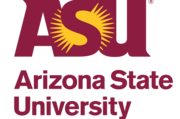
One of the world’s most significant freshwater science inventions was developed in a lab at Arizona State University, where Cody Friesen, Ph.D., discovered a way to create water out of thin air. Today, his company, Source Global, provides drinking water to some of the most parched places on Earth.
About 130 miles to the south in Green Valley, Arizona, University of Arizona engineering alumnus Anthony Mulligan founded Hydronalix, which has grown into a leading manufacturer of robotic lifeguard vessels deployed around the world in river and ocean rescues, including by the U.S. Navy.
The success of these Arizona companies is a testament to the power of research. Arizona’s universities and research institutions are at the leading edge of technology transfer – the commercialization of inventions that once existed only inside a university lab, hospital setting or research organization.
The world would be a very different place without technology transfer: think Gatorade, Google, cancer treatments, pharmaceuticals and COVID-19 vaccinations, just to name a few innovations.
ASU and UArizona rank among the top universities worldwide for patents, according to the latest report by the National Academy of Inventors and the Intellectual Property Owners Association. ASU ranked No. 8 in 2021 – the most-recent report – with 153 patents, alongside Massachusetts Institute of Technology, Stanford University and Harvard University, while UArizona ranked No. 28 with 86 patents, ahead of institutions such as University of Oxford, Yale University and Duke University.
“Arizona’s entrepreneurial DNA is embedded in our world-class universities and research institutions, which are solving complex challenges on a global scale,” said Sandra Watson, president and CEO of the Arizona Commerce Authority. “The patents and innovations developed inside labs and classrooms in Arizona are having real-world impacts, thanks to our robust tech transfer culture. This benefits not only Arizonans, but citizens around the world.”
A robust network of entities in the state help ensure Arizona’s breakthrough discoveries aren’t limited to academic journals. Chief among them are the tech transfer organizations at Arizona’s public research universities: Skysong Innovations (ASU), Tech Launch Arizona (UArizona) and NAU Innovations (Northern Arizona University).
To date, Skysong Innovations has secured more than 1,400 U.S. patents and closed nearly 1,400 licensing deals with commercial partners. The organization has assisted more than 200 ASU startups that have collectively attracted more than $1.2 billion in external funding. By 2026, the Seidman Research Institute projects that ASU’s tech transfer will have a $2.9 billion nationwide impact.
“Innovation is the engine that drives our national economy, and the majority of research that happens in our country happens at the university level. But there is far less economic or societal impact of that research unless there is technology transfer to protect and commercialize those innovations,” said Charlie Lewis, vice president of venture development and physical sciences at Skysong Innovations. “As more innovations come out of the university and more startups emerge in different sectors, we have more areas ripe for investment to help get those companies launched and their roots planted in Arizona.”
UArizona’s Tech Launch Arizona brings together the university community, along with local and regional ecosystems to move UArizona inventions and technological innovation into the marketplace, where they can create lasting social and economic impact. Tech Launch has secured 535 patents, nearly 500 licenses and options, and formed 128 startups.
NAU Innovations (NAUI) provides business development services associated with licensing technologies to entrepreneurs and startup companies. The NAUI team includes staff members from the Office of the Vice President for Research as well as outside experts and law firms.
Additionally, the Arizona Commerce Authority (ACA) manages a whole suite of programs designed to advance commercialization and research opportunities for startups and small businesses, including the Small Business Innovation Research (SBIR) and Small Business Technology Transfer (STTR) programs, known as America’s seed funds. The ACA also manages university research tax credits, research and development tax credits and the Federal and State Technology (FAST) partnership program. Together, these programs facilitate Arizona research and development by leveraging state and federal resources.
Mulligan’s Hydronalix is among the most successful Arizona companies at securing SBIR funding to advance its research. Mulligan said his company has “won about $16 million in SBIR” funding since 2011, which has helped advance the company’s commercial sales. Through SBIR research in collaboration with the U.S. Navy, the company developed its Emergency Integrated Lifesaving Lanyard, called EMILY, which now is deployed worldwide in water rescues.
Meanwhile, at UArizona, Tech Launch Arizona (TLA) last year celebrated its 10-year anniversary of tech transfer.
“When TLA started, it was because university administration made a conscious decision to become as good at commercialization as it was at research,” Douglas Hockstad, associate vice president of Tech Launch Arizona, told BizTucson last year.
That decision paid off. An independent report by the Rounds Consulting Group estimated that in the five years from fiscal 2017 to fiscal 2021, TLA had supported about 2,500 jobs and generated $1.6 billion in economic activity.
Learn more about ACA programs to accelerate technology transfer at azcommerce.com/programs/sbirsttr-resource-center/.


